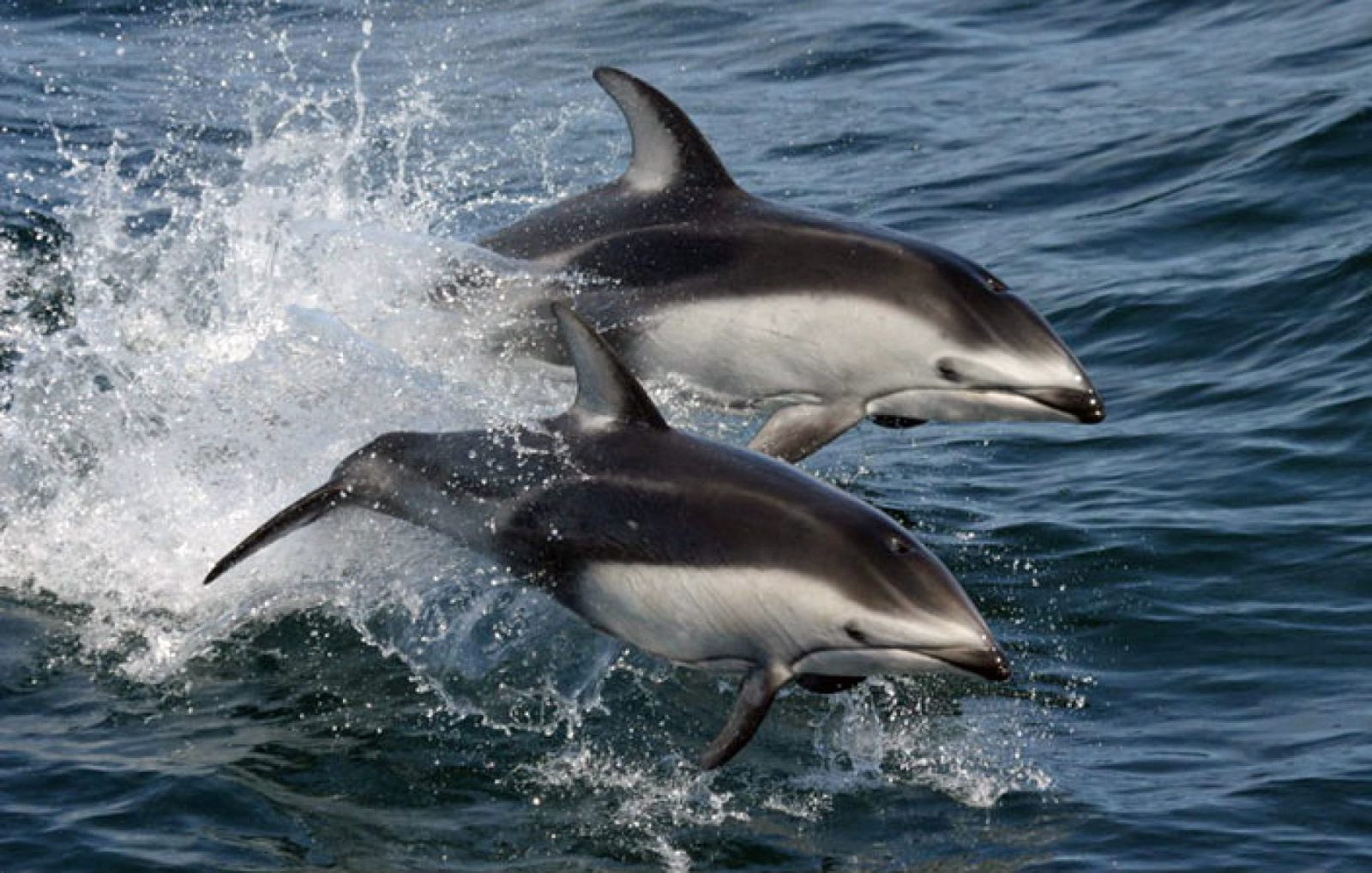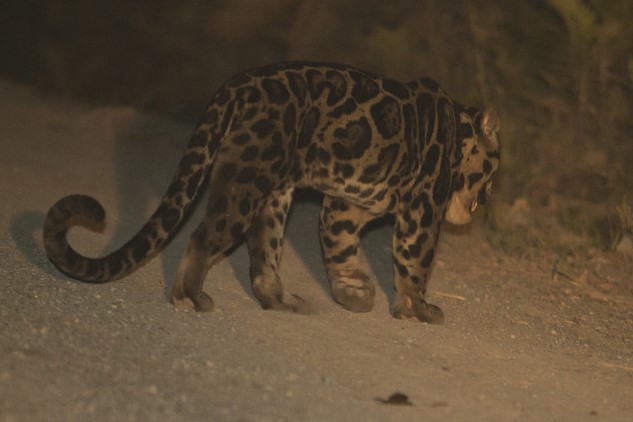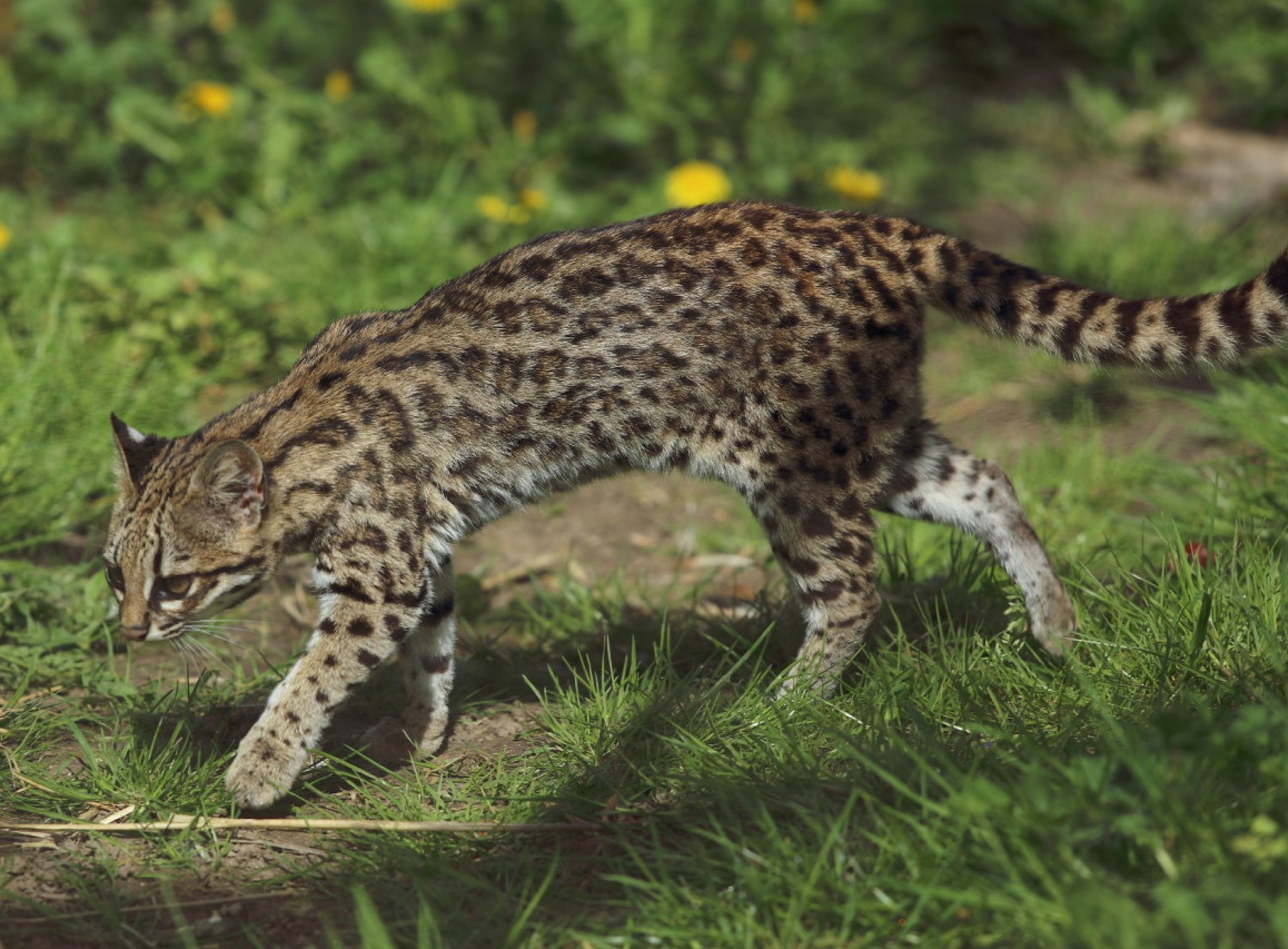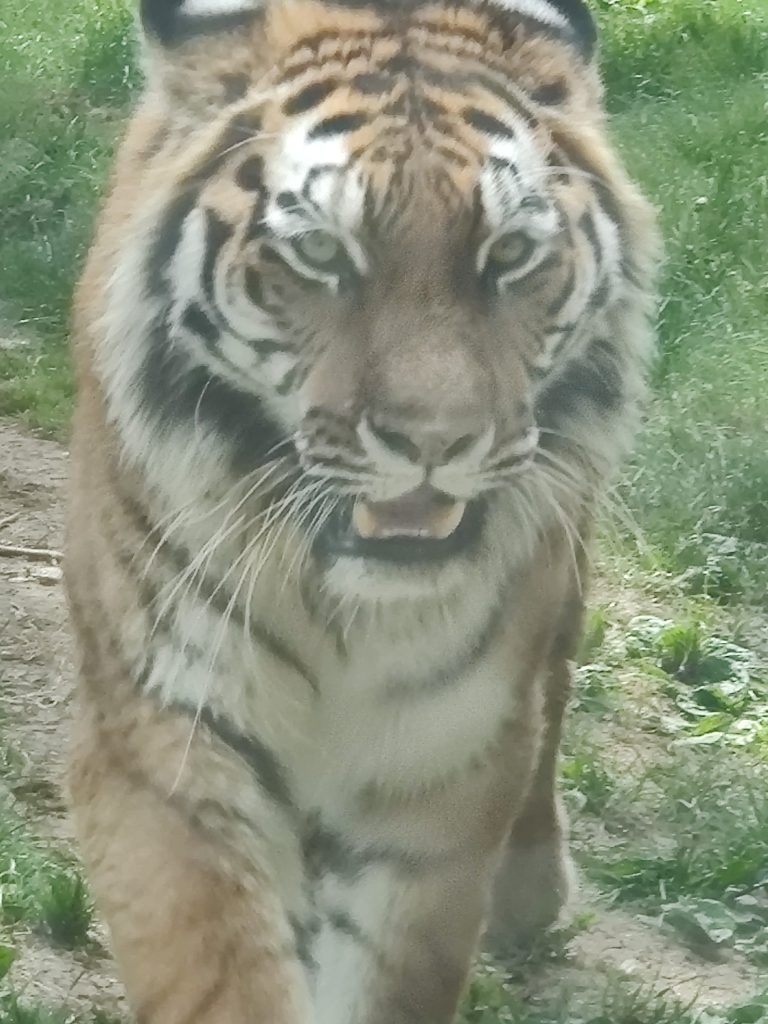
Pacific white-sided dolphin
The Pacific white-sided dolphin, also called the hookfin porpoise, is an active dolphin found in the cool or temperate waters of the North Pacific Ocean.
The Pacific white-sided dolphin was named by Smithsonian mammalogist Theodore Nicholas Gill in 1865. It is morphologically similar to the dusky dolphin, which is found in the South Pacific.[6] Genetic analysis by Frank Cipriano suggests the two species diverged around two million years ago.
Though traditionally placed in the genus Lagenorhynchus. Molecular analyses indicate they are closer to dolphins of the genus Cephalorhynchus, in the Lissodelphininae subfamily, than to both the Atlantic white-sided dolphin and the White-beaked dolphin. It has therefore been proposed to move the Pacific white-sided dolphin to the resurrected genus Sagmatias together with other southern hemisphere species (hourglass dolphin, Dusky dolphin and Peale’s dolphin). However, there is still some analysis to do, before this move can take place. White-sided dolphins swim in groups of 10 to 100, and can often be seen bow-riding and doing somersaults. Members form a close-knit group and will often care for a sick or injured dolphin. Animals that live in such large social groups develop ways to keep in touch, with each dolphin identifying itself by a unique name-whistle. Young dolphins communicate with a touch of a flipper as they swim beside adults.
United Nations banned certain types of large fishing nets in 1933, many Pacific white-sided dolphins were killed in drift nets. Some animals are still killed each year by Japanese hunting drives
There are around 100 in dolphinarias in the USA and Japan. They are currently listed as least concern
Below is a list of any articles on the species, and below that a video of it. Under this, I will add any links that might help you see this species in the wild.























